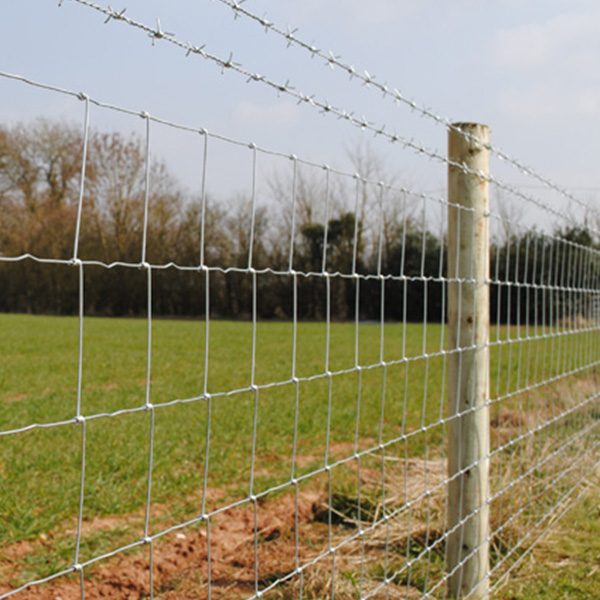
Nov . 07, 2024 17:21 Back to list
Detailed Overview of Wire Mesh Fence Specifications and Installation Requirements
Understanding Wire Mesh Fence Details
Wire mesh fencing is a popular choice for various applications, including residential, commercial, and agricultural uses. Its combination of durability, versatility, and cost-effectiveness makes it a preferred option for many property owners. In this article, we will delve into the details of wire mesh fencing, including its features, types, applications, installation process, and maintenance.
Features of Wire Mesh Fencing
Wire mesh fencing is primarily made from high-quality steel wires, which can be galvanized or coated with vinyl to enhance durability and resistance to rust and corrosion. The wires are woven together to form a mesh pattern, which allows visibility while providing a physical barrier.
One of the key features of wire mesh fencing is its strength. The wires are typically available in various gauges, with thicker wires providing increased strength. This type of fencing can withstand the elements and is less likely to bend or break under pressure compared to other materials.
Moreover, wire mesh fencing offers flexibility in design. It can be constructed in various heights and styles, including standard mesh, welded mesh, and chain-link. This adaptability makes it suitable for different environments and purposes.
Types of Wire Mesh Fencing
There are several types of wire mesh fencing, each serving specific purposes
1. Chain-link Fencing This is the most common type of wire mesh fence. It consists of interlocking steel wires, creating a rectangular mesh pattern. Chain-link fencing is often used for residential properties, parks, and sports fields due to its affordability and ease of installation.
2. Welded Wire Fencing This type features wires that are welded together at each intersection, making it stronger than chain-link fencing. Welded wire fencing is ideal for agricultural applications, livestock containment, and garden enclosures.
3. Barbed Wire Fencing Intended for security, barbed wire fencing incorporates sharp barbs at intervals along the wire. It is commonly used in agricultural settings to deter intruders and keep animals confined.
4. Vinyl Coated Wire Fencing This variation involves wires coated with vinyl for additional protection against rust and corrosion. It is available in different colors, allowing property owners to choose an aesthetic that complements their landscape.
Applications of Wire Mesh Fencing
Wire mesh fences are utilized in a variety of applications
- Residential Use Homeowners often install wire mesh fencing to define property boundaries, keep pets secure, or provide a pool enclosure.
wire mesh fence details

- Commercial Use Businesses sometimes use wire mesh fencing for security purposes, to protect equipment, or to delineate areas within their properties.
- Agricultural Use Farmers often rely on welded wire fencing to keep livestock contained, protect crops from wildlife, and establish boundaries for different animal types.
- Municipal Projects Parks, playgrounds, and sports fields often feature chain-link fencing to provide safety without obstructing visibility
.Installation Process
The installation of wire mesh fencing is relatively straightforward, but it is important to follow specific steps to ensure a successful outcome
1. Planning Determine the area you wish to enclose, and mark the location of the fence posts.
2. Gathering Materials Depending on the type of wire mesh fencing you choose, gather all necessary materials, including mesh rolls, posts, post caps, and fasteners.
3. Setting Posts Install fence posts at regular intervals, typically 6-10 feet apart. Use concrete to secure the posts if necessary.
4. Attaching the Mesh Unroll the wire mesh and attach it to the posts using wire ties or fasteners. Ensure the mesh is taut and aligned properly.
5. Finishing Touches Add any additional features such as gates and post caps, and inspect the fence for stability and security.
Maintenance Tips
While wire mesh fencing is generally low-maintenance, there are a few tips to keep it in good condition
- Regular Inspection Periodically check for any signs of rust, damage, or loose wires and address them promptly. - Cleaning Clean the fence as needed, especially if there is a buildup of dirt or debris that could lead to corrosion.
- Repainting or Coating For vinyl-coated mesh, inspect the coating regularly and reapply as necessary to prevent rusting.
In conclusion, wire mesh fencing is a versatile and durable option for various applications. Understanding its features, types, and maintenance needs can help property owners make informed decisions and ensure the longevity of their fence. Whether for security, aesthetic appeal, or agricultural needs, wire mesh fencing stands out as a reliable solution.
-
Why a Chain Link Fence is the Right Choice
NewsJul.09,2025
-
Upgrade Your Fencing with High-Quality Coated Chicken Wire
NewsJul.09,2025
-
The Power of Fence Post Spikes
NewsJul.09,2025
-
The Best Pet Enclosures for Every Need
NewsJul.09,2025
-
Secure Your Property with Premium Barbed Wire Solutions
NewsJul.09,2025
-
Enhance Your Construction Projects with Quality Gabion Boxes
NewsJul.09,2025
Products categories











